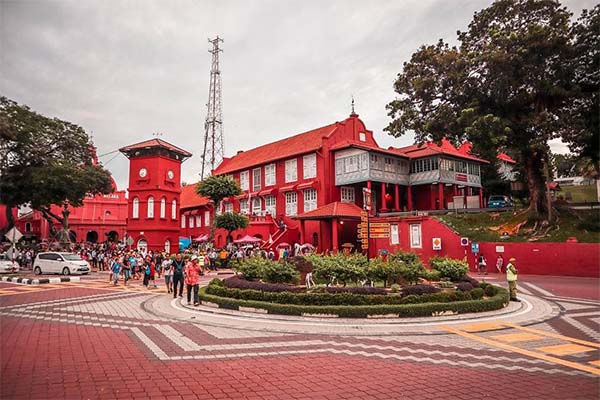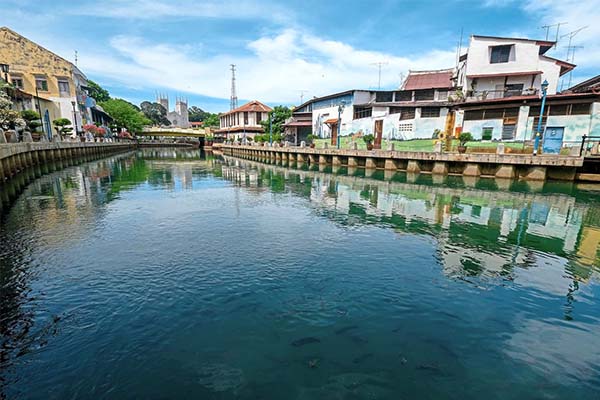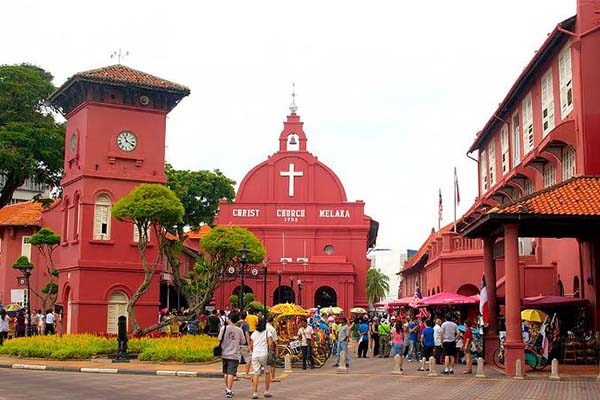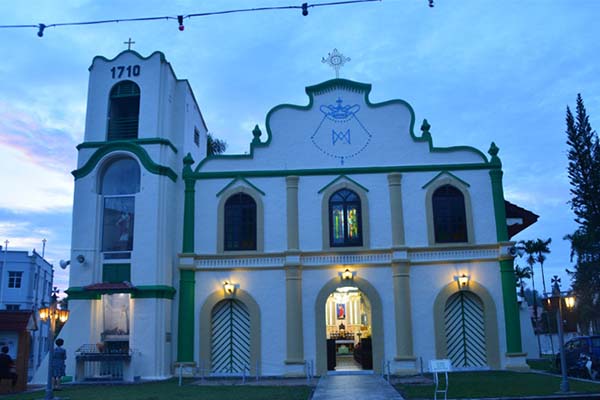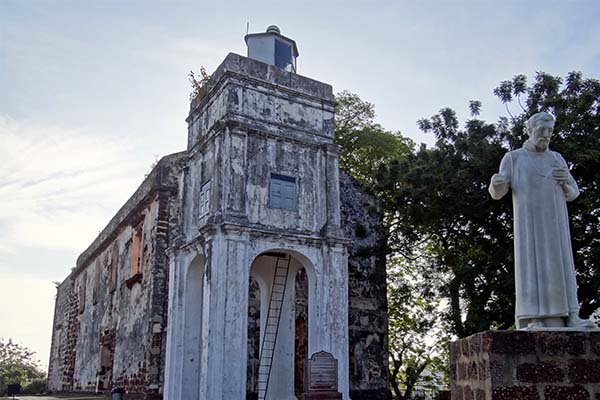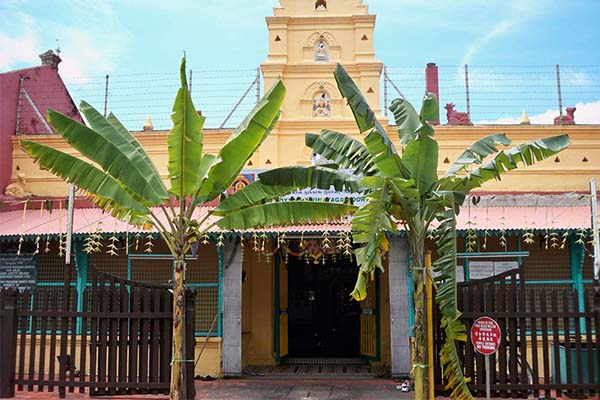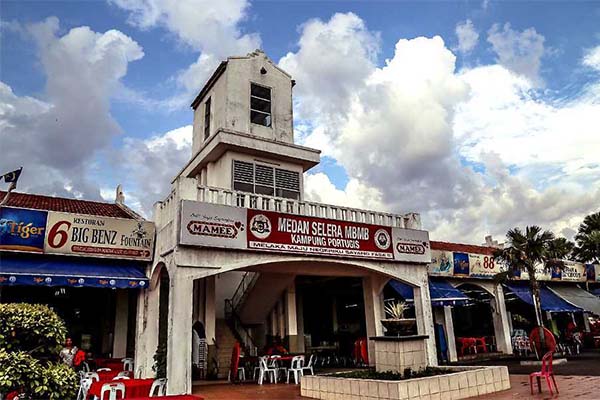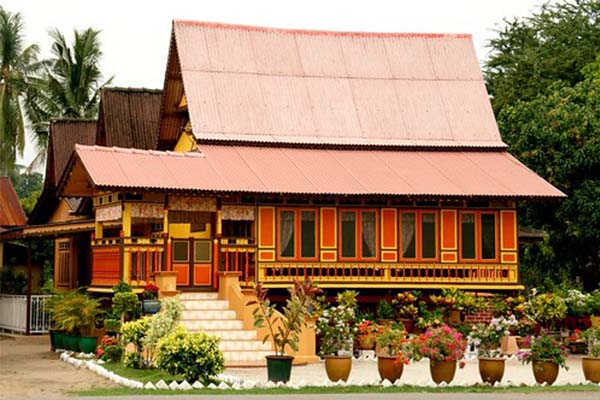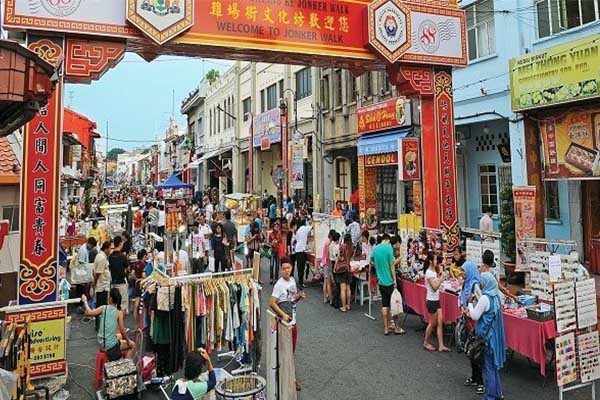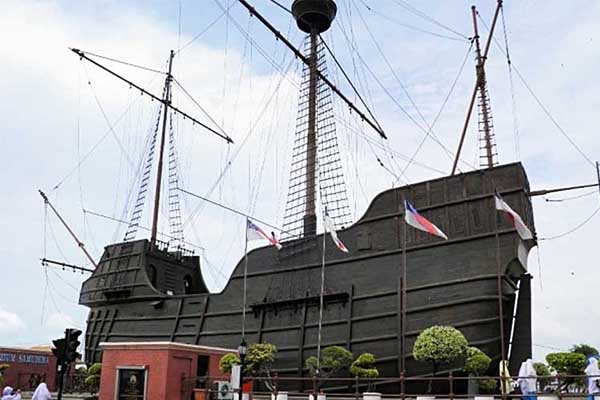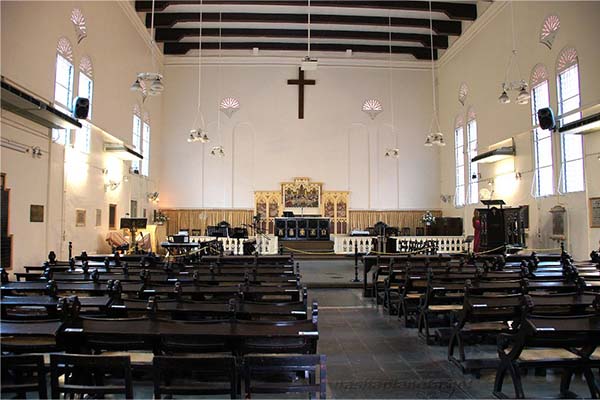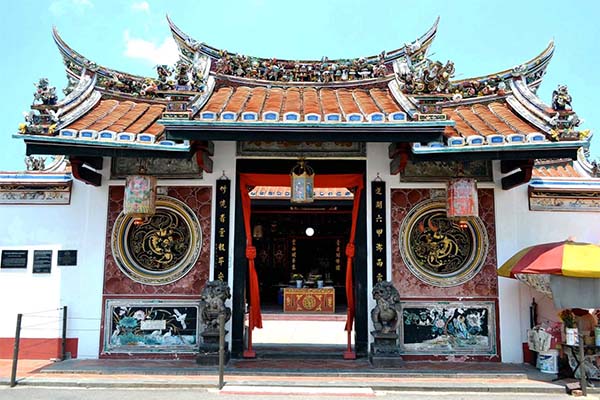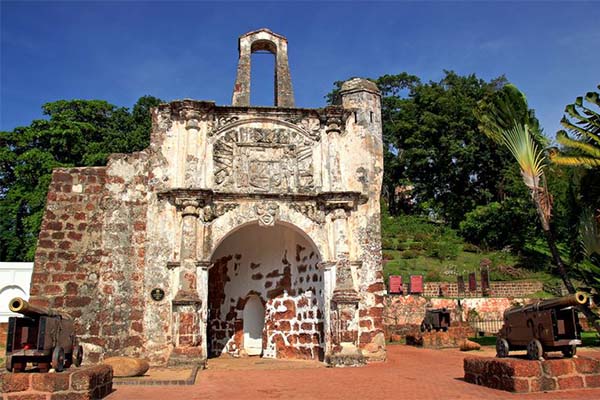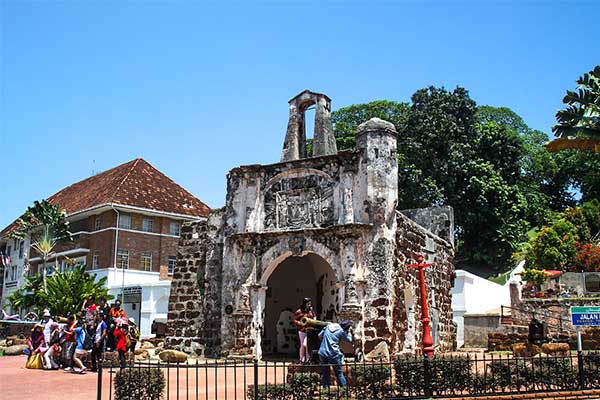- You have no items in your shopping cart
- Continue Shopping
- Hotel Transfer within Kuala Lumpur, Petaling Jaya and Damansara area only
- Private Transportation for duration of the tour
- English speaking guide-driver
- Mineral water bottle
Join the Malacca Tour where you can explore Malacca like never before. Malacca, a small but attractive place in Malaysia, brags a rich history, which you can see after seeing its structures around. Each attraction here highlights its own history, traditions and group of inhabitants, a perfect tour for history buffs and vacationing shutterbugs.
Porto de Santiago (A’ Famosa)
The remains of this historical site is where you can get a glimpse into Malaysia’s colonial past, and what’s unique is that it has passed through the hands of three different colonists: the Portuguese, Dutch, and British. Even if you’re not into history, it’s still fun to take a walk around this place. This is a great spot for taking photos or selfies. Besides the historic icon itself, there are cannons outside the structure that you can pose with. And there are many nooks and crannies with great natural lighting streaming in through gaps in the walls, for more wonderful pictures.
St. Paul’s Church
As you move on from the A’ Famosa, you will see a white flight of stairs along the slope. These are the stairs which will take you to the St Paul’s Church. The church can be reached easily by climbing up the stairs for about 5 to 10 minutes depending on your speed of walking. Upon reaching the top of St Paul’s Hill, its breath-taking view of the city of Malacca and its coastline will captivate you. Built by Duarte Coelho, a Portuguese Captain in 1521 AD, the church was formerly a chapel for the Portuguese and was named as ‘Nosa Senhora’ which means Our Lady of the Hill. Although what remains of the church are now only ruins, the strong and thick bricks are a reminder that this chapel used to be a magnificent piece of architecture in its era.
St. Peter’s Church
Discover the oldest functioning Roman Catholic Church in Malaysia, completed more than 300 years ago. Built by the early Portuguese colonists in the first decade of the 18th century, the simple yet elegant structure features an East-meets-West architectural style. One of the building’s bells, dating back to 1608, was brought here from an older Dutch church. Inside the church, you will marvel and admire the largely unadorned interior, or stand in front of this historically significant shrine for some pictures.
Stadthuys Malacca
Built between 1641 and 1660 on the ruins of a fort which belongs to the Portuguese, it is believed that the Stadthuys is the oldest Dutch building in the East. This massive red building exhibits Dutch colonial architectural features which includes substantial solid doors and louvered windows. Since its completion in 1980, it functioned as an administrative center of successive governments for a period of 300 years. It was in 1982 when the Stadthuys was converted into a history museum which exhibits Malacca’s history starting from the great Malay Sultanate and the Portuguese, Dutch and British colonization till the present day.
Christ Church Malacca
The Christ Church is a well preserved example of Dutch masonry where red and orange flowers blanket the small park in front of it making it one of the most recognizable landmarks in Malacca. It’s one of Malaysia’s oldest functioning Protestant churches, and although its construction began as early as 1741 on the Dutch occupation centennial, it wasn’t until 1753 that it was completed. Before this was built, the Dutch who lived in the city used the old church on top of St. Paul’s Hill. Later on, when the British took over Malacca they added a weathercock and bell to Christ Church and transformed it from a Protestant church into an Anglican one.
Cheng Hong Teng Temple
This is a premier historical monument that has survived the ravages of time. Built in 1645, it remains the finest of Chinese temples in Malaysia and ranks among the most significant in Southeast Asia, being central to the spiritual aspirations of the Chinese community in historic Malacca. Elaborate decorations grace its interior and exterior. Golden phoenixes and dragons – sculpted in Chien Nien or fine porcelain cut-and-paste shard work – add splendor to the building. Scenes from the Three Kingdoms are depicted in traditional Chai Hui – decorative wall paintings, combining Chinese ink and tempera paints. Other artistic elements include carvings of mythical dragons and sages in a variety of attire and facial expressions that evokes telling tales.
Kampung Kling Mosque
One of the oldest mosques in Malaysia, the 19th-century rebuild of the mosque you see today fuses several styles. Its multi-tiered meru roof takes inspiration from Hindu temples, its Moorish watchtower minaret is typical of early mosques in Sumatra, while its English and Dutch tiles bedeck its interior. What makes Kampung Kling Mosque special is its building plan – Unlike most mosques in Western Asia which are built on a hexagonal or rectangular plan, Masjid Kampung Kling stands on a square plan. It’s an embodiment of the street, the city, and the country that cradles it. The architectural influences it comprises reflects how Malaysia has embraced the many cultures that nurtured its rich history and traditions, making it the melting pot of culture we see today.
Sri Poyatha Moorthi Temple
Its bright yellow-painted facade makes it very hard to miss if you’re walking down Harmony Street. Established in 1781, this Hindu Vinayagar temple is one of the first Hindu temples built in Malaysia. Its design displays an array of colours, ostentatious stone carved statues and figures of animals and Hindu deities. Its structure is topped with a three-leveled tower with blue molded edges and arch niches with relief images. Each of the columns of this peak tower has a triangular hole-accents at its center as with the perpendicular base where a line of triangles run horizontally. Sculptures of sacred cows also adorn the fenced rooftop of the temple.
Jonker Street or Heeran Street
Both Jonker and Heeran Streets attract hordes of tourists around the world. While both streets hold interesting history and rich architectural charms, they still have their individuality. While Jonker Street was named after a place for “young noblemen” who had not quite made it to the upper level of nobility, Heeren Street, was for the “gentlemen” or “masters” in the upper crust of society. Both serve as a haven for antique collectors, bargain hunters, and vintage fashion enthusiasts. Food lovers too, will be spoiled for choice when it comes to delicious food as the streets house cafes and bistros serving an array of Nyonya, Asian, and European cuisines and delicacies at affordable prices.
Malacca River
Melaka River was once dubbed the ‘Venice of the East’ by European seafarers as it was a prominent port of entry for traders from Europe and Asia during the late 16th century. It is a popular tourist attraction primarily because of the 45-minute River Cruise, which offers tranquil views of colonial buildings, antiquated shophouses, local settlements and ancient bridges as well as modern decorations and local art displays within Malacca. You will find massive and bold-coloured street art by the Melaka River. Also known as the Melaka River Street Art Project, it was a collaboration between local painters and graffiti artists, producing eye-catching designs with the city’s shophouses and guesthouses as their canvas.
Flor de la Mar Maritime Museum
Embark on a voyage through Melaka’s maritime history at these linked museums. The most enjoyable of the Maritime Museum’s three sections is housed in a re-creation of Flor de la Mar, a Portuguese ship that sank off Melaka’s coast. It highlights the maritime history of Malacca and the golden ages of Malacca’s Sultanate as the Emporium of the East. Paintings displaying how the Straits of Malacca was a strategic location for traders from both the east and the west to stop by at Malacca and conduct their businesses while waiting for the monsoon winds to change direction are exhibited. The museum also boasts a myriad of articles such as porcelain, silk, textile and spices used by the seamen of the yesteryears and even come sunken treasures hauled from Diana, another shipwreck. For ship fanatics, there’s a collection of ship models showcased at the museum. You will be able to learn more about the types of ships and their functions from the collection.
Portuguese Settlement
What used to be a simple village of poor fishermen for many decades, has become a major tourist attraction. Nowadays, the Portuguese Settlement is a thriving Kristang community. At its heart is the Portuguese Square (Medan Portugis), which comprises a courtyard with a number of seafood restaurants, a couple of bars and a small museum. On weekends, it’s bustling as local tourists and foreigners flock to the settlement to indulge in Portuguese seafood, while the sun sets in Malacca Strait.
Sultan’s Well
The Sultan’s Well was constructed during the reign of Sultan Mansur Shah for his wife, Hang Li Poh, believed by some to have been a princess from China (however, there are no Chinese records confirming this). The Sultan had three or four wives before marrying the princess who would use this well. The well is said to never dry out even in the severest of droughts.
Bukit China
Its name can be traced to a legendary Ming Dynasty princess who supposedly arrived from China to marry Mansur Shah, the sixth Sultan of Malacca. Bukit China (Chinese Hill) was originally an undulating jungle of three mounds — Bukit Tinggi, Bukit Gedong and Bukit Tempurong. It apparently took on the name after the Sultan allowed the entourage of princess Hang Li Poh to settle around the foot of the main hill. Though there are doubts over the purported royal lineage of Hang Li Po, the guesswork is that she might have been a daughter of one of the emperor’s concubines or even a royal handmaiden. But there are no doubts about the special relationship between Malacca and China then. Today, the hill has become a recreational ground where joggers have carved out a track between graves. It has also become a valuable green lung for the city, offering great views from the peak.
Traditional Malay House – Sentosa Villa
Villa Sentosa is perhaps the most attractive and best preserved of all the houses in Kampung Morten and it now serves as a private museum and is open to the public. It is known as The Malay Living Museum. It also was awarded as one of the best tourist attractions from Malaysia Tourism. Regardless of the host you get, each will regale you with stories and show the antique furniture, tablewares, historic artefacts and vintage photos of family members, with pride. Remember to sign the visitors’ book and you will see a stack of old visitor books going back to the 1960s.
- FREE for children below three (3) years, but please consider vehicle seating limits
- Please wear comfortable walking shoes
- Finalized itinerary will be done by Asia Region on the day of tour
- Due to the nature of the tour, the weather, road condition, local circumstances, prevailing safety factors, the route and itinerary may vary from those published but the content of the tour will be the same
- This ticket is refundable if it has not been redeemed.
- Tickets that have been redeemed at the counter will not be refunded.
- There will be a 10% cancellation fee for all refunds.
- All tickets are valid for 6 months from the date of purchase.
- You do not need to print the ticket, simply present the QR code via your phone.
- In order to redeem your ticket, please proceed to the attraction’s counters.
- MyKad or MyKid must be presented at the attraction for purchase of Malaysian – with MyKad type tickets.

